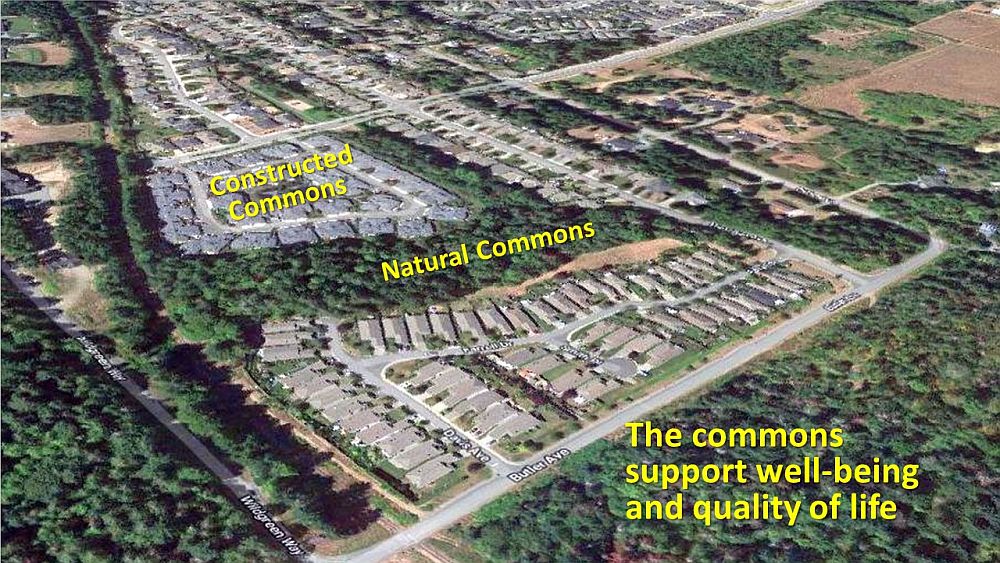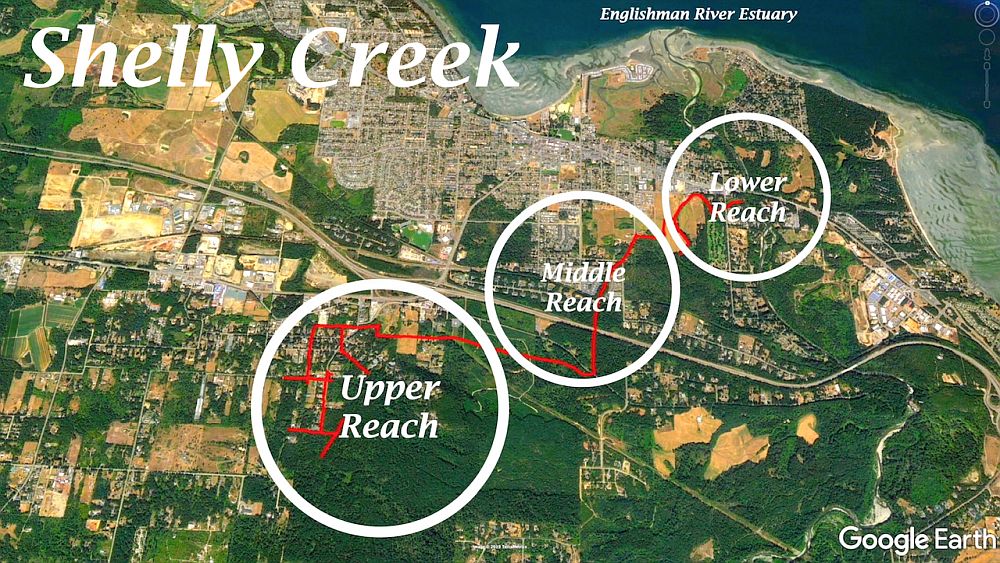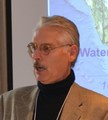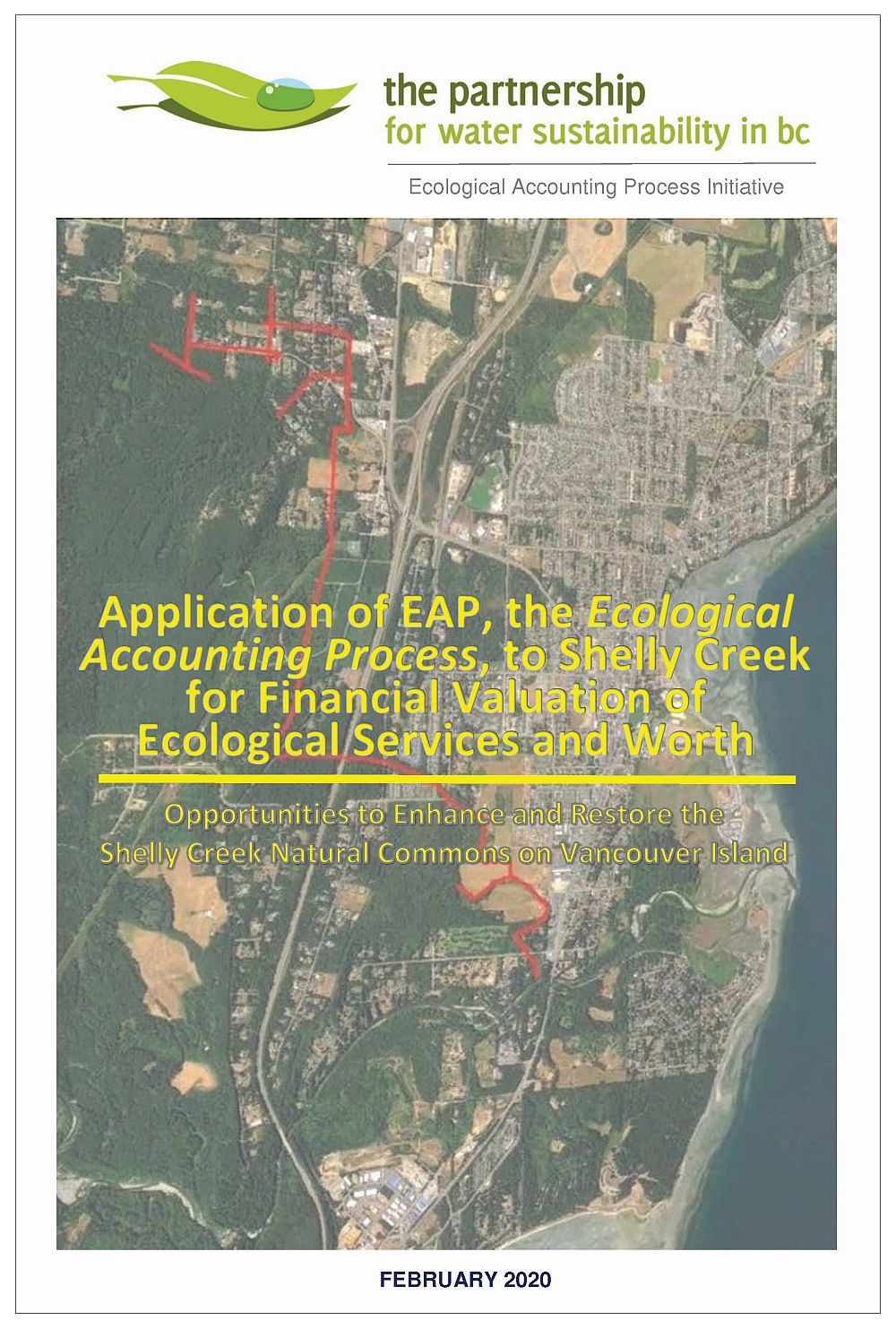FINANCIAL VALUATION OF SHELLY CREEK ECOLOGICAL SERVICES IN THE CITY OF PARKSVILLE AND REGIONAL DISTRICT OF NANAIMO: “We can now see how our ongoing investments, as stream stewards, not only can improve the worth of a creekshed’s biophysical functions, but also improve riparian land values as well,” stated Peter Law, President, Mid Vancouver Island Habitat Enhancement Society (MVIHES)
Note to Reader:
The COVID-19 pandemic has resulted in a life-altering moment for every British Columbian. Because the threat to health and life demands it, minds are suddenly open to doing things differently. Hopefully, our coming together in a common cause to fight the virus is an awakening of a spirit that will ripple through the months and years ahead.
During a crisis, the challenge is to prepare for the day after tomorrow when all attention is focused on today. Front and centre for British Columbians is the day-by-day response to the COVID-19 emergency. At the same time, however, we must keep our eyes on the horizon and get ready for the “new business as usual” that must surely follow as day follows night. This is the context for release of Application of EAP, the Ecological Accounting Process, to Shelly Creek for Financial Valuation of Ecological Services and Worth.
This report by the Partnership for Water Sustainability in British Columbia illustrates what the “new business as usual” for enhancing and restoring the natural commons would look like, post COVID-19. The report would inform those who wish to get serious about incorporating ecological assets and services into asset management strategies and plans.

The parallel concepts of the NATURAL COMMONS and the CONSTRUCTED COMMONS enable residents, elected persons, and practitioners to consider ecological services and use of land (development) as equally important.
VALUATION OF ECOLOGICAL SYSTEMS & SERVICES: “The commons concept encompasses social, ecological and financial values. EAP, the Ecological Accounting Process, represents the social perspective and is the way for the community to get into the conversation,” says Tim Pringle, EAP Chair
EAP is a Decision Support Tool
EAP, the Ecological Accounting Process, is a pragmatic ‘made in BC’ approach to valuation of the ecological services supplied by a stream (one of our most common ecological systems). Think of it as a decision support tool for use by the community and local government.
EAP is an initiative of the Partnership for Water Sustainability. EAP considers the system as a whole, takes into account social values, andis guided by how the community uses the natural commons, including influences on nearby parcel values.
Application of the EAP methodology and metrics can help to inform an investment strategy for protection and/or restoration of ecological-hydrological function in the natural commons. EAP is particularly relevant to urban and suburban creeksheds drained by a 1st order stream.
EAP is a Three-Stage Initiative
The EAP program has three stages: Test / Refine / Mainstream. During 2017 and 2018, two Stage 1 demonstration applications tested the concept, and demonstrated EAP relevance to local government. In 2019, two Stage 2 demonstration applications resulted in working definitions and consistent application of the EAP methodology.
In 2020 and 2021, six Stage 3 demonstration applications will mainstream use of EAP. The grand total of ten demonstration applications will encompass a range of land use situations in five regional districts. Each case study is unique. Partner communities frame creekshed-specific questions to be addressed by the EAP application.
The Stage 2 applications are Shelly Creek in the City of Parksville and the Regional District of Nanaimo, and Kilmer Creek in the District of North Vancouver. The Shelly findings are highlighted in the article below. The Kilmer findings will be released in May.
The Shelly Creek EAP Demonstration Application was undertaken in collaboration with MVIHES, the Mid Vancouver Island Habitat Enhancement Society. Over time, MVIHES has morphed from Stewards of the Englishman River Recovery Plan to Stewards of the Englishman River Watershed. Since 2011, the MVIHES action plan has concentrated on Shelly Creek.

Financial Valuation for Shelly Creekshed in the City of Parksville and Regional District of Nanaimo
Fragmentation of Landscapes
“The EAP study of Shelly Creek addresses the condition of a typical 1st order stream on the east coast of Vancouver Island. The research question was framed in two parts. Some notable conclusions emerged,” states Tim Pringle.
 “A common history of land uses on the east coast of Vancouver Island and other regions in BC has been the fragmentation of the riparian network in both rural and urbanizing landscapes.
“A common history of land uses on the east coast of Vancouver Island and other regions in BC has been the fragmentation of the riparian network in both rural and urbanizing landscapes.
“Over decades of disturbance, a landscape’s ecological links/services decline as it’s economic (land use) linkages increase. Thus, a descriptive way to visualize these outcomes is this: riparian ecosystems (networks) have become reduced to riparian zones as shown on the maps of today.”
The Research Question
Uplift on Property Values
“Where there is a functioning riparian zone, Shelly Creek has an uplift of 11% per m2 on property values. Expressed another way, purchasers have paid more to be adjacent to the stream. Only the urbanized area of the stream has intact, although altered, continuous riparian area,” observes Tim Pringle.
The value of the natural commons asset in the urban middle reach is expressed as $1374 per lineal metre and $173 per m2.

MVIHES volunteers – “citizen science” in action in Shelly Creek, Vancouver Island (Photo Credit: David Mackenzie)
Streamkeeper Perspective
 “The members of the Mid Vancouver Island Habitat Enhancement Society have devoted over 10 years of time and energy towards restoring the health of Shelly Creek for salmon and trout,” states Peter Law, MVIHES President.
“The members of the Mid Vancouver Island Habitat Enhancement Society have devoted over 10 years of time and energy towards restoring the health of Shelly Creek for salmon and trout,” states Peter Law, MVIHES President.
“Through participation in the data collection process for the EAP analysis, we have learned that our volunteers have contributed over $90,000 to the ‘maintenance’ of the creek and its’ fish populations.
“That is like spending $10,000 per year to support the monitoring of water quality, flow gauges, riparian planting, downstream smolt trapping and of course, community engagement! But we do it for free, because we can see this creek needs help.
“Our members are impressed with the scope of the analysis brought forward with this EAP application, and are pleased to have partnered with the Partnership for Water Sustainability. We can now see how our ongoing investments, as stream stewards, not only can improve the worth of a creekshed’s biophysical functions, but also improve riparian land values as well.
“These outcomes result in a Win – Win for our fish and local communities.”

Shelly Creek in the Middle Reach
Implications for Asset Management Strategies and Plans
Natural Commons is a Land Use
“We arrived at an important insight about ecological assets; that is, an ecological commons is a land use. Regulations define stream functions and setback requirements. Whether it is a pond, wetland or riparian zone, it can be measured.
“The assessed values of adjacent parcels can be used to provide a value for the natural commons. The inference is that the area of the natural commons would be zoned residential or whatever if the stream was not there.
“BC Assessment provides longitudinal measures of property values, distinguishing the values of land and improvements. Assessments of parcel values are comprehensive and comparative based on sales of interests in properties.
“An important perspective on assessment data is that it captures the preferences of purchasers and sellers. Not only is the sales price of transactions reflected, so is the quality of worth”
Are you aware that Ecological Systems provide Core Municipal Services?
“Streams (as defined in the Riparian Areas Regulations) intercept and detain rainwater, convey flows from storm sewers, provide alignments for trails and greenways while supporting local aquatic and terrestrial life.
“These and other services influence quality of life and the financial value of land parcels. Maintenance and management (M&M) of ecological assets should therefore be planned as core municipal services.
“Residents and property owners are familiar with constructed commons services – roads, potable water, storm sewers and many other ongoing services. They expect these services to endure. Similarly, communities expect the ecological services provided by the natural commons to be enduring.”
Are you aware that the ‘No Harm Rule’ for Land Appraisal could be applied to streams?
“The research findings suggest that the diminution of stream functions gradually will draw the attention of property owners to the NO HARM RULE used in land appraisal. Simply put, this means the potential value of a property should reflect the ‘highest and best use’.
“The No Harm Rule establishes a financial expectation. Applied to the ecological functions of the stream, this would encourage persons with property interests to ensure that they understand how land use decisions may harm or help the stream.
“The community may rely on the stream system being in good functioning condition as a feature in parks, as a natural area bordering residential parcels, etc. Adjacent property owners have an obligation to recognize these values and avoid activities on their property that might harm the stream and have a negative impact on parcel values,” emphasizes Tim Pringle.
To Learn More:
DOWNLOAD A COPY OF: “Shelly Creek Financial Valuation of Ecological Services and Worth“


